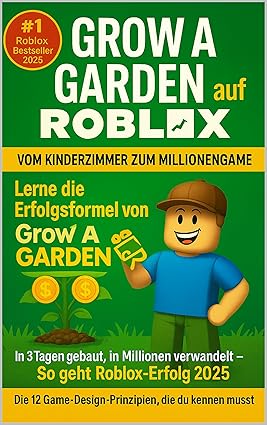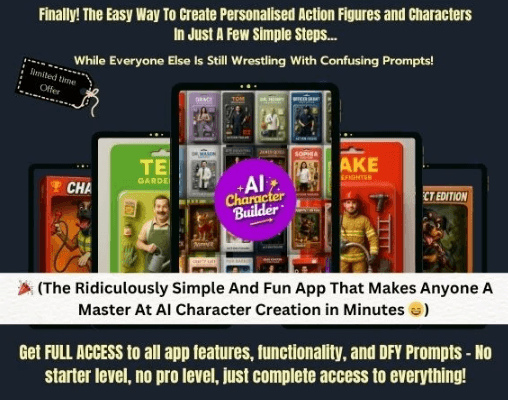You might find it hard to believe, but the most-played game of 2025 wasn’t a space shootout or a battle royale — it was a humble gardening simulator built by a teenager. I’ll be honest, when my younger cousin first showed me the pixelated carrots in Grow a Garden, I stifled a laugh. Fast forward three months, and I’d joined 16 million others, racing to out-harvest strangers online. How did this unassuming game become a worldwide obsession—and what can you take from its secret sauce?
The Genius in Simplicity: How Grow a Garden Hooked Millions
Imagine a Roblox game so simple, yet so captivating, that it turned a 16-year-old developer into a millionaire—without a marketing budget, a big studio, or even a team. That’s the story behind Grow a Garden, the viral sensation that’s taken the Roblox world by storm since its launch in March 2025. Over 16 million players worldwide have been swept up by its irresistible charm, and it all starts with a humble patch of virtual soil, a handful of Sheckles, and your very first carrot seeds.
What makes Grow a Garden so addictive? It’s the genius in its simplicity. You begin with just enough Sheckles—the in-game currency—to buy your first carrot seeds. Carrots are the perfect starter crop: they grow fast, sell quickly, and give you that instant hit of progress. There’s no confusing tutorial, no overwhelming options, just the pure satisfaction of planting, watering, and harvesting. As one player put it,
“I never expected watering virtual carrots could be so exciting.” — Jan Hauser
But the magic doesn’t stop there. Once you’ve mastered the basics, strawberry seeds unlock a whole new level of gameplay. These aren’t just any crops—they’re multi-harvest plants. With strawberries, you don’t have to replant after every harvest. Instead, you get multiple rounds of juicy profits from a single planting. It’s a small change, but it makes a huge difference. Suddenly, you’re strategizing, optimizing your garden layout, and watching your Sheckles pile up faster than ever.
Research shows that this simple, rewarding gameplay loop is the secret sauce behind the game’s explosive growth. Players love the feeling of constant progress, and the leaderboard system adds just the right touch of friendly competition. It’s not uncommon to see players with nearly a billion Sheckles to their name, proudly displayed for all to see. And because Grow a Garden is designed to be relaxing and non-exploitative, you never feel pressured to spend real money. There are no aggressive Robux paywalls, no hard sells—just pure, wholesome fun.
What’s truly remarkable is how this Roblox game exploded in popularity without any major marketing push. No flashy ads, no influencer campaigns—just word of mouth and the irresistible pull of a well-crafted experience. The social features are a big part of the appeal. You can visit other players’ gardens, admire their creative layouts, and even compete for a spot on the leaderboards. It’s a community-driven phenomenon, where every player’s progress feels meaningful.
From the first carrot seed to the thrill of unlocking multi-harvest plants like strawberries, Grow a Garden proves that you don’t need complex mechanics or flashy graphics to create a hit. All you need is a simple, satisfying loop that keeps players coming back for more. If you’re looking for a Roblox game that’s easy to pick up, endlessly rewarding, and genuinely fun—this is the one you can’t miss.
Behind the Curtain: Psychology and Community (Or, Why You’ll Come Back Tomorrow)
Ever wonder what keeps you logging in to Grow a Garden day after day? It’s not just the thrill of harvesting virtual carrots or the rush of seeing your Sheckle count climb. The secret lies in the game mechanics—carefully designed to tap into your love for daily quests, the excitement of seed packs, and the irresistible pull of the leaderboard. Let’s pull back the curtain and see why this Roblox sensation, crafted by a 16-year-old prodigy, has millions hooked—and why you’ll find yourself coming back tomorrow.
Daily Quests: The Power of Small Wins
It starts with a simple routine. Each day, you pop into the Gear Shop to check the latest daily quests. Complete a few easy tasks—maybe water a certain number of plants or harvest a set amount of crops—and you’re instantly rewarded with seed packs. These aren’t just any rewards. Seed packs often contain rare seeds like Durian or Raspberry, giving you a real sense of progress and a reason to return. Research shows that these reward-based mechanics, rooted in game psychology, are powerful motivators for daily retention. You’re not just playing; you’re building momentum, one quest at a time.
Seed Packs: The Joy of Discovery
There’s something magical about opening a seed pack. Will you get a common carrot, or will you score a rare Raspberry? This element of surprise keeps things fresh and exciting. The anticipation taps into the same psychological triggers that make card packs and loot boxes so addictive—except here, you’re not pressured to pay. In Grow a Garden, you earn your rewards through play, not payment. That’s a breath of fresh air in today’s gaming world, where aggressive monetization often overshadows genuine fun.
Leaderboards and Community Gardens: Compete, Connect, and Learn
But Grow a Garden isn’t just about solo progress. The game’s leaderboard showcases the top Sheckle hoarders, sparking friendly competition and giving you a tangible goal to chase. Want to see how the pros do it? You can visit other players’ gardens, wander through elaborate setups, and pick up new strategies. This community gaming aspect is a game-changer. Studies indicate that the ability to interact, compete, and learn from others creates sustained engagement and keeps the experience feeling fresh.
- Visit: Explore community gardens and get inspired by creative layouts.
- Compete: Climb the leaderboard and see your name alongside the best.
- Learn: Discover new planting strategies from top players.
No Ads, No Pressure—Just Pure Progress
One of the most refreshing aspects? There are no intrusive ads or aggressive paywalls. You progress by playing, not paying. This philosophy is at the heart of Grow a Garden’s appeal. As Jan Hauser puts it:
‘Grow a Garden reminds us that sometimes, simple joys done well can outshine flashier rivals.’
The game leans into core psychological hooks—small wins, visible growth, and community-driven competitiveness. It’s a masterclass in community gaming, where the mechanics are designed to reward your time and effort, not your wallet. And that’s why, even after you’ve harvested your hundredth carrot, you’ll find yourself eager to see what tomorrow’s daily quests will bring.
Learn, Adapt, Prosper: Real-Life Lessons from Virtual Gardens
What if the secret to building a million-dollar business was as simple as planting virtual carrots? That’s the magic behind Grow a Garden, the indie game that’s redefining gaming trends on Roblox. Created by a 16-year-old developer with no team and zero budget, this digital ecosystem has turned a straightforward farming loop into a viral sensation—and a real-world success story.
At its core, Grow a Garden is beautifully simple: buy seeds, plant them, harvest crops, and sell for profit. Rinse and repeat. But don’t let the simplicity fool you. This cycle is the backbone of countless thriving businesses, both virtual and real. The game’s design encourages you to start small—maybe with carrots, the fastest-growing crop—and gradually expand your operation. As you earn more Sheckles, you’re nudged to invest in higher-value seeds like strawberries, which offer multiple harvests and save you time. It’s a lesson in scaling up: reinvest wisely, diversify your assets, and watch your garden—and your profits—grow.
But what truly sets Grow a Garden apart in the crowded world of indie games is its approach to monetization and community. Sure, you can spend Robux to gain a competitive edge—maybe even swipe a few crops from your neighbor’s plot—but you’re never forced to pay to win. The real currency here is creativity and persistence. The game’s positive feedback loop keeps you coming back: every small win feels rewarding, and every new strategy unlocks fresh possibilities. Research shows that this kind of iterative progress is a key driver behind viral game and business success.
Community is another pillar of Grow a Garden’s meteoric rise. You’re not just farming in isolation; you’re part of a living, breathing digital ecosystem. Leaderboards, daily quests, and the ability to visit other gardens create a sense of friendly competition and shared achievement. Watching how others design their plots or maximize their Sheckles inspires you to experiment and improve. This organic, player-driven growth is far more powerful than any paid advertising campaign. As the book Grow a Garden auf Roblox highlights, “simplicity can scale, organic growth beats costly ads, and genuine community keeps people coming back.”
Perhaps the most inspiring takeaway? You don’t need a massive budget or a big-name studio to make it big. As Jan Hauser puts it,
Grow a Garden is proof that you don’t need to reinvent the wheel—you just have to make it roll in a satisfying way.
The game’s runaway success is a testament to the potential of digital ecosystems: one teenage coder, a clever idea, and a community that believes in the journey.
So whether you’re a gamer, a creator, or just someone looking for business inspiration, Grow a Garden offers a blueprint for success in the digital age. Start simple. Iterate. Listen to your community. And remember—sometimes, the path to prosperity is just a carrot patch away.
TL;DR: Grow a Garden’s triumph was no accident—it’s a testament to the irresistible power of simple ideas when paired with clever mechanics and genuine community spirit. Whether you’re gaming, building, or just curious, there’s inspiration to harvest here.







